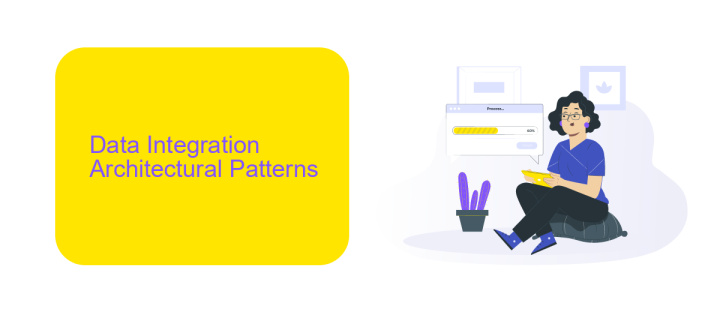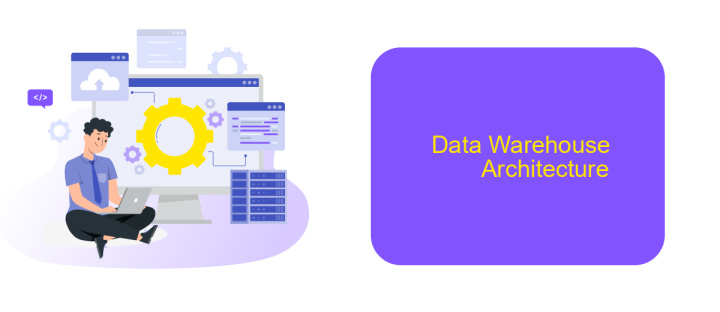Data Integration Architecture Patterns
In today's data-driven world, organizations rely on seamless data integration to harness the full potential of their information assets. Data Integration Architecture Patterns provide a structured approach to unify disparate data sources, ensuring consistency, accuracy, and accessibility. This article explores various patterns, highlighting their key features, benefits, and use cases to help you choose the right strategy for your data integration needs.
Introduction
Data integration is a critical aspect of modern business operations, enabling seamless communication and data flow between disparate systems. As organizations increasingly rely on diverse applications and platforms, choosing the right data integration architecture pattern becomes essential for achieving efficiency and scalability.
- ETL (Extract, Transform, Load): This traditional approach involves extracting data from various sources, transforming it into a suitable format, and loading it into a target system.
- ELT (Extract, Load, Transform): Similar to ETL, but the transformation occurs after loading the data into the target system, often used in big data environments.
- Data Virtualization: Provides a unified view of data from multiple sources without physical data movement, enabling real-time access and analysis.
- API-Based Integration: Utilizes APIs to connect different systems, allowing for real-time data exchange and integration flexibility.
Services like ApiX-Drive simplify the process of setting up integrations by offering a user-friendly interface and pre-built connectors for various applications. By leveraging such tools, businesses can streamline their data integration efforts, reduce manual intervention, and ensure data consistency across their systems.
Data Integration Architectural Patterns

Data integration architectural patterns are essential for ensuring seamless data flow between disparate systems. One common pattern is the ETL (Extract, Transform, Load) process, which involves extracting data from various sources, transforming it into a suitable format, and loading it into a target system. This pattern is particularly useful for consolidating data from multiple databases into a data warehouse, enabling comprehensive analytics and reporting. Another popular pattern is data virtualization, which allows users to access and manipulate data without needing to know where it is stored or how it is formatted, thus providing real-time integration and reducing data redundancy.
API-based integration is increasingly favored for its flexibility and scalability. Services like ApiX-Drive facilitate this by offering a user-friendly platform to connect different applications and automate workflows without requiring extensive coding knowledge. This service supports a wide range of applications, making it easier to synchronize data across various systems in real-time. Event-driven architecture is another pattern where data integration is triggered by specific events, ensuring timely and relevant data updates. Each of these patterns has its own strengths and is chosen based on the specific needs and constraints of the organization.
Data Lake Architecture

Data Lake Architecture is a modern approach to managing and analyzing large volumes of structured and unstructured data. It enables organizations to store all their data in its raw form, preserving its original format and allowing for more flexible data processing and analysis.
Key components of a Data Lake Architecture include:
- Data Ingestion: The process of importing data from various sources into the data lake. This can be achieved using batch processing, real-time streaming, or a combination of both.
- Data Storage: A scalable storage layer that can handle vast amounts of data. Common storage solutions include distributed file systems like HDFS or cloud-based storage services such as Amazon S3.
- Data Catalog: A metadata management system that helps users discover, understand, and manage the data stored in the lake.
- Data Processing: Tools and frameworks for transforming and analyzing data, such as Apache Spark, Hadoop, or cloud-based services like AWS Glue.
- Data Security and Governance: Mechanisms to ensure data privacy, compliance, and quality, including access controls, encryption, and auditing.
Integrating various data sources into a data lake can be simplified using services like ApiX-Drive, which automates the process of connecting and synchronizing data from multiple platforms. This ensures that data is consistently updated and readily available for analysis, enabling organizations to derive valuable insights from their data lake.
Data Warehouse Architecture

Data warehouse architecture is a critical component for organizations aiming to consolidate data from various sources into a single, unified repository. This architecture enables efficient querying and analysis, providing a comprehensive view of the business landscape. A well-designed data warehouse architecture ensures data consistency, quality, and accessibility, supporting better decision-making processes.
There are several key components that make up a robust data warehouse architecture. These include data sources, ETL (Extract, Transform, Load) processes, a centralized data repository, and data access tools. Each component plays a crucial role in ensuring that data is accurately collected, transformed, stored, and made available for analysis.
- Data Sources: Origin points of raw data, such as databases, applications, and external data feeds.
- ETL Processes: Mechanisms to extract data, transform it into a suitable format, and load it into the data warehouse.
- Centralized Data Repository: The core storage area where integrated data resides.
- Data Access Tools: Interfaces and applications used to query and analyze the stored data.
Tools like ApiX-Drive can streamline the ETL processes by automating data integration from various sources, reducing manual effort and minimizing errors. By leveraging such services, organizations can enhance the efficiency and reliability of their data warehouse architecture, ensuring that accurate and timely data is always available for strategic analysis.
- Automate the work of an online store or landing
- Empower through integration
- Don't spend money on programmers and integrators
- Save time by automating routine tasks
Hybrid Architecture
Hybrid architecture combines the strengths of both on-premises and cloud-based data integration solutions, offering a flexible and scalable approach to managing data across diverse environments. This model enables organizations to leverage the security and control of on-premises systems while benefiting from the agility and cost-efficiency of cloud services. By integrating data from multiple sources, including legacy systems and modern cloud applications, hybrid architecture ensures seamless data flow and real-time access to critical information.
One of the key advantages of hybrid architecture is its ability to support a wide range of integration patterns and use cases. Tools like ApiX-Drive facilitate the setup of these integrations by providing a user-friendly interface and robust automation capabilities. ApiX-Drive allows businesses to connect various applications and data sources without the need for extensive coding, thereby reducing complexity and accelerating deployment. This hybrid approach not only enhances operational efficiency but also provides the flexibility to adapt to evolving business needs and technological advancements.
FAQ
What is Data Integration Architecture?
What are the common patterns in Data Integration Architecture?
How do I choose the right Data Integration pattern?
What are the benefits of using a Data Integration tool?
How can I automate and manage Data Integration processes effectively?
Routine tasks take a lot of time from employees? Do they burn out, do not have enough working day for the main duties and important things? Do you understand that the only way out of this situation in modern realities is automation? Try Apix-Drive for free and make sure that the online connector in 5 minutes of setting up integration will remove a significant part of the routine from your life and free up time for you and your employees.


